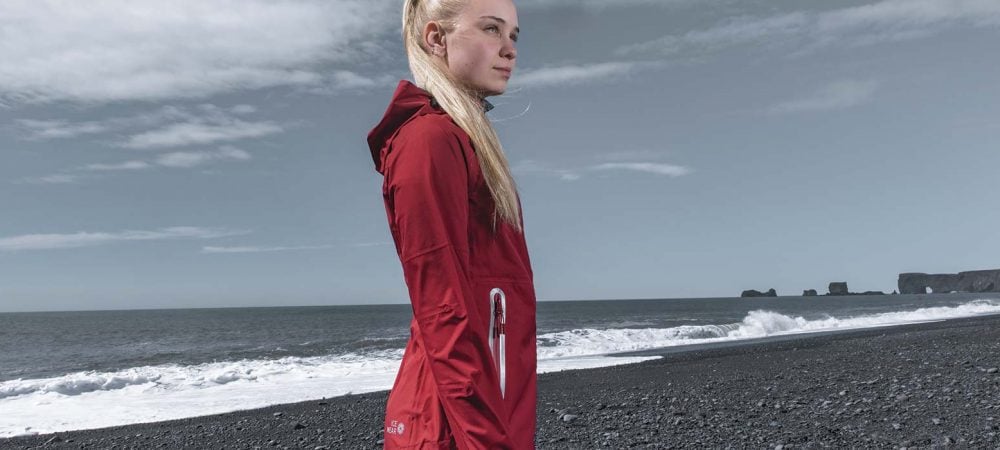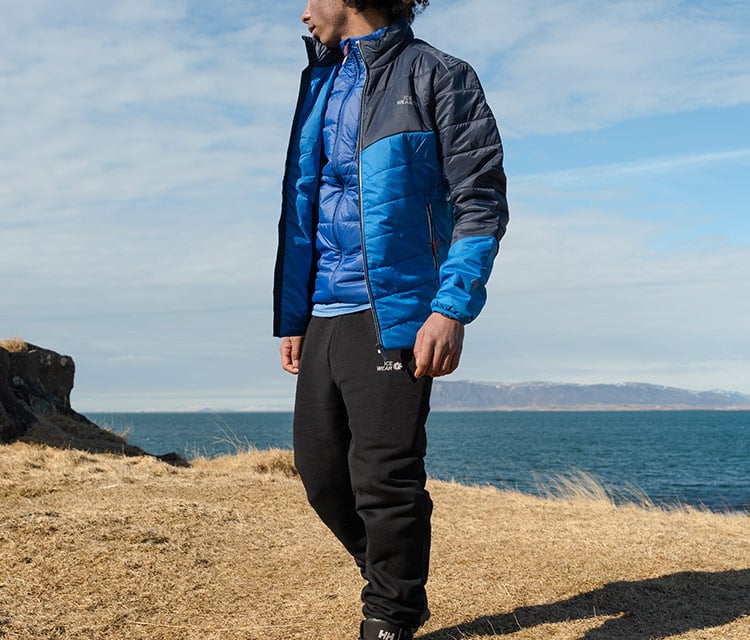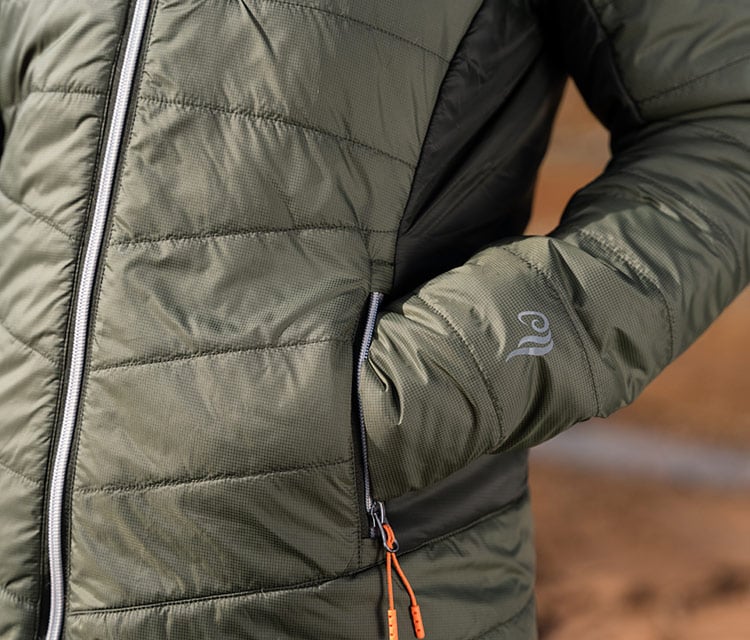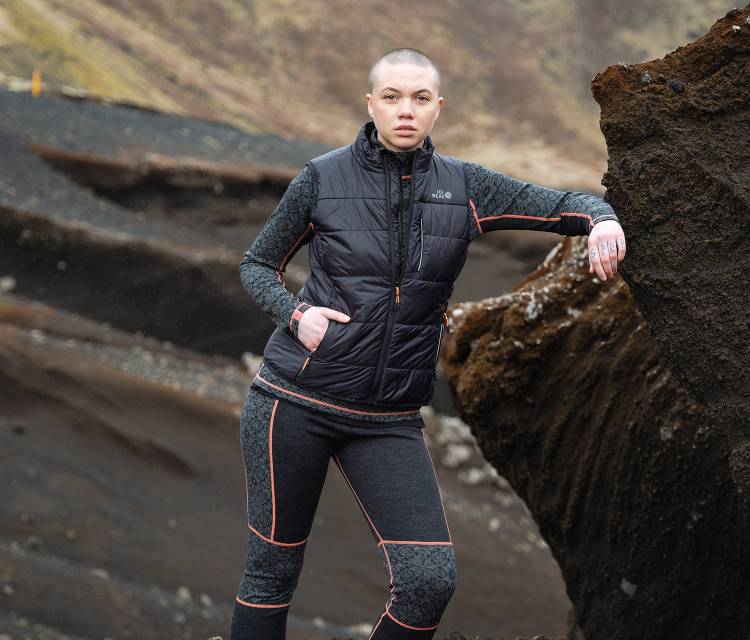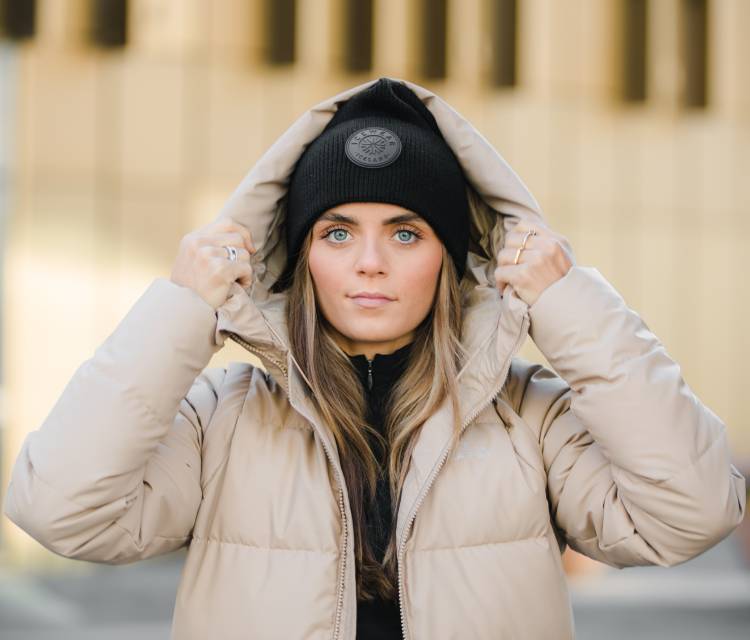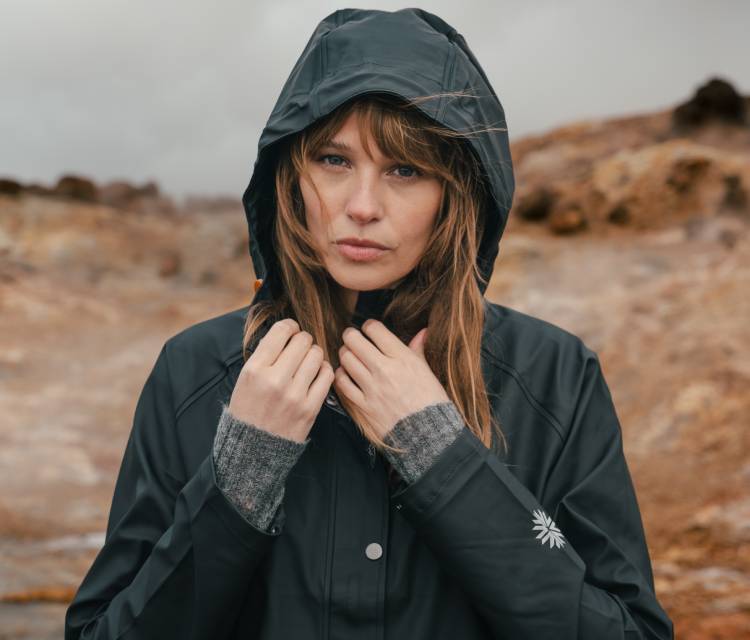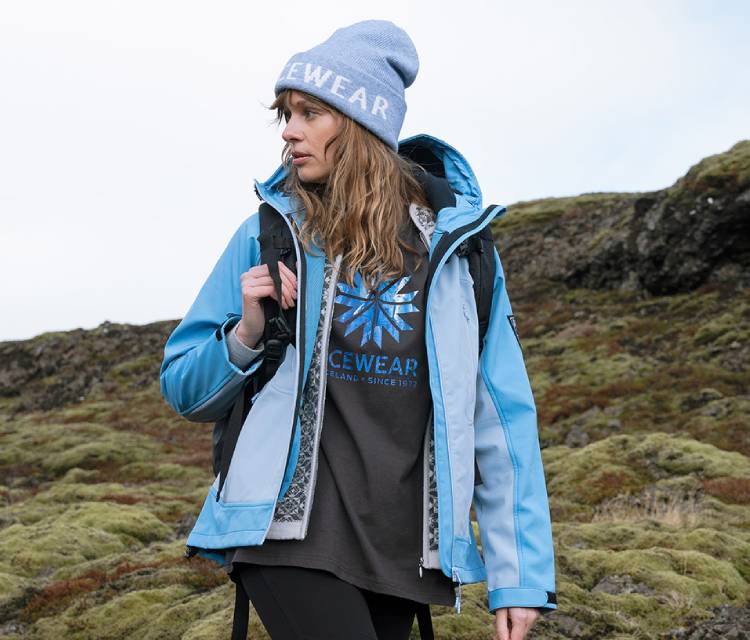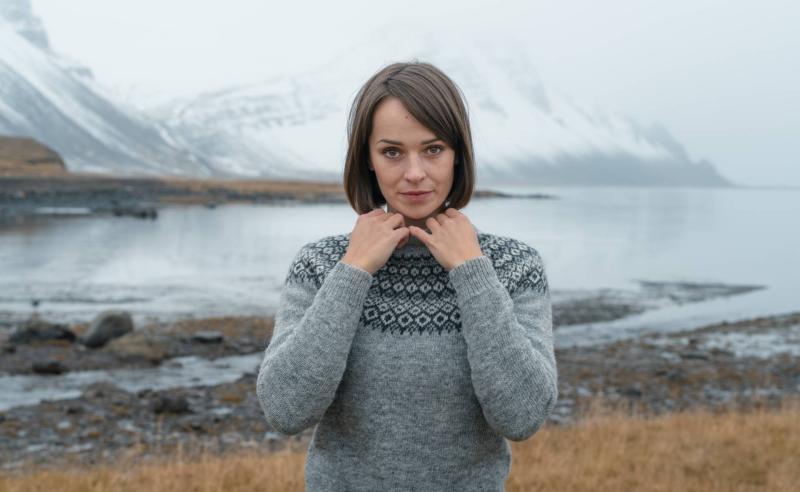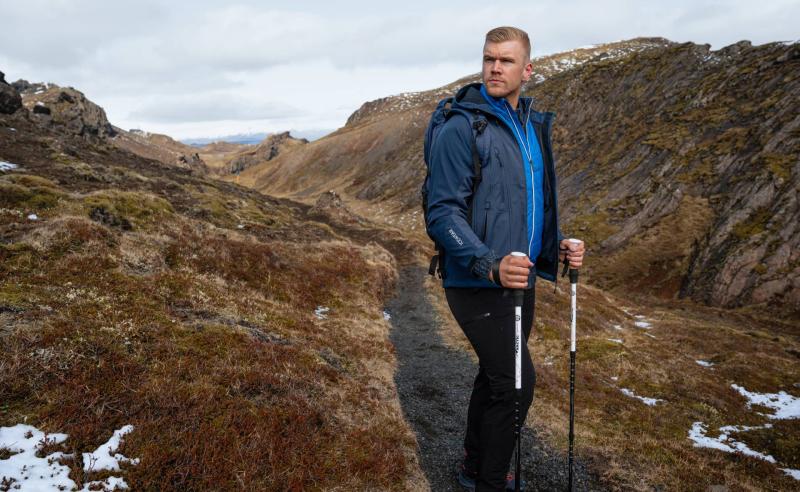Index
- A Traveler's Guide to Visiting Iceland
- Icelandic Weather: the Seasons Unveiled
- Weather in Reykjavik, the Capital of Iceland
- How to Chase the Northern Lights
- Preparing for Icelandic Weather: Essential Tips for Travelers
- Discover Icelandic Culture: Population, Language, and Heritage
- Iceland's Wildlife: from Icelandic Puffins to Icelandic Sheep
- Preparing for Your Icelandic Adventure: First Things First
Key findings for traveling in Iceland:
- Over the year, general summer temperatures reach around 55°F and winter temperatures drop as low as 30°F. The weather isn’t as cold or extreme as the name “Iceland” might suggest.
- The best time to witness aurora borealis is during autumn and winter, and into early spring. Darkness prevails from September until early April, and that’s when this solar activity is at its peak.
- The culture of Iceland nonetheless reflects a unique and rich blend of Scandinavian heritage and trendsetting innovations.
- The Icelandic krona (ISK) is the nation’s currency, providing coins and notes of many designs in circulation.
- The production of Icelandic wool, renowned for its water-repellent outer layer and insulating inner layer, is a cornerstone of Icelandic culture and commerce.
What to Expect When Traveling to Iceland: A Traveler’s Guide
If you’re embarking on a trip to Iceland, your first step is to prepare for the journey with a comprehensive look at what to expect. Iceland is a small but captivating country with a long list of cultural and natural wonders to discover. It’s not Disney World, though — there isn’t a neatly packaged one-size-fits-all way to experience it.
From the Northern Lights and the rugged landscapes to a chic capital city and a coast dotted with fishing communities, Iceland offers an unforgettable adventure, whatever you hope to experience.
Icelandic Weather: the Seasons Unveiled
Iceland’s weather isn’t what most people expect. Yes, there’s snow and ice. Yes, the winters are cold and dark. Iceland’s seasons, though, offer unique opportunities that change how its natural wonders are experienced.
In the summertime (from June to August), the sun is out for up to 22 hours in the day (on the summer solstice). The midnight sun provides extended daylight hours that allow travelers to hike late into the night.
Summertime weather snapshot:
- Extended daylight hours
- Mild temperatures from 45°F to 55°F
- Optimal for outdoor activities and sightseeing
Once autumn descends upon the island (starting in September, ending in November), the countryside paints a vibrant backdrop of falling leaves for travelers. Imagine driving along the coast from fishing town to fishing down as you reach a variety of natural destinations.
Autumn is an ideal time for more involved outdoor sports, and to explore Iceland’s natural wonders — from majestic waterfalls to volcanic landscapes reshaped with every eruption. With temperatures ranging from 35°F to 45°F, the crisp air makes for fewer crowds and more comfortable hiking and climbing.
Autumn weather snapshot:
- Stunning fall foliage
- Cooler temperatures for ideal hiking (from 35°F to 45°F)
- Fewer crowds
Wintertime truly transforms Iceland (December-February). The countryside is blanketed with snow and ice, and from December to February, travelers also have the chance to witness the Northern Lights, or aurora borealis. This celestial phenomenon illuminates the night sky with dancing ribbons of light.
The shortest day of the year falls in late December, providing only a few hours of twilight-like illumination. Most of the trekking and exploring is only done as far as nearby attractions outside of Reykjavik (like hot springs near the capital) during these extended nighttime hours.
Winter weather snapshot:
- Snow-covered landscapes
- Temperatures between 30°F and 40°F
- Long nights with only a few hours of sunlight
- Many activities still available in the capital, Reykjavik
When spring arrives (starting in March and stretching through May), Iceland’s landscape awakens from its winter slumber. Longer daylight hours illuminate the blooming wildflowers and everyone welcomes warmer weather.
Spring weather snapshot:
- Blooming wildflowers and foliage
- Temperatures between 35°F and 45°F
- Birds and other wildlife migrate back or come out of hiding
- Longer daylight hours
Average Monthly Temperatures in Iceland
Iceland weather year round is appropriate for travel — it just depends what kind of trip to Iceland you want to take. When does it snow in Iceland? What are the Iceland travel requirements to arrive prepared? The Iceland climate is notoriously unpredictable day-to-day, but these Iceland temperature and precipitation averages will help you plan.
Here are all four seasons in Iceland broken down by month:
| Iceland Weather by Month: | Average Daily Temperature | Average Monthly Precipitation |
| Weather in Iceland in January | 32°F | 75mm |
| Weather in Iceland in February | 32°F | 70mm |
| Iceland weather in April | 34°F | 60mm |
| Iceland weather in May | 37°F | 50mm |
| Weather in Iceland in June | 43°F | 40mm |
| Weather in Iceland in July | 48°F | 35mm |
| Weather in Iceland in August | 52°F | 30mm |
| August weather in Iceland | 52°F | 35mm |
| Weather in Iceland in September | 48°F | 45mm |
| Weather in Iceland in October | 41°F | 65mm |
| Weather in Iceland in November | 36°F | 75mm |
| Weather in Iceland in December | 33°F | 80mm |
Weather in Reykjavik, Iceland
The capital of Iceland, Reykjavik, lies along the southwest coast of the island nation. If you plan on spending time in the city, it’s helpful to know how the weather is there over the course of the year.
The temperatures in Reykjavik in the summer range from 45°F to 55°F, the perfect weather for outdoor activities and sightseeing.
Temperatures drop in autumn, but only to the low 40s (F) on average. Autumn is an ideal time to visit Reykjavik with fewer visitors after the summer tourists leave.
In the winter, temperatures hover between 30°F and 40°F, and the landscape offers a snowy backdrop and fewer travelers. This sets you up for potential hot spring adventures right outside of the city and plenty of traditional Icelandic cuisine and social activities in town.
The temperatures in Reykjavik in the winter fall between 35°F and 45°F, making it a great time to explore the nearby countryside and witness the migrating birds and blooming foliage.
How to Chase the Northern Lights
The Northern Lights (aurora borealis) are a galactic display of ribbons of color that dance across the night sky. Seeing the Northern Lights is a bucket-list experience for many people (and it’s easy to imagine why).
Can you see the Northern Lights in Iceland? Yes! In fact, the Iceland Northern Lights are one of the most viewed in the world. The best time to witness aurora borealis is during autumn and winter, and into early spring. Darkness prevails from September until early April, and that’s when this solar activity is at its peak.
Reykjavik offers opportunities to see the Northern Lights, but venturing outside the capital city to rural areas enhances your chances of witnessing the show. This also reduces possible air pollution from covering the view. Some popular spots for witnessing aurora borealis include:
- Thingvellir National Park (less than a one-hour drive from Reykjavik)
- Heiðmörk Nature Reserve (where a rare Icelandic forest can be found)
- Nesjavellir (conveniently right behind Heiðmörk Nature Reserve), with many hot springs
- Reykjanes peninsula (with more hot springs, active volcanoes, canyons, hills and lakes)
- The Esja Mountain Range with beautiful valleys and viewing points
Because the Northern Lights are best viewed in the winter (due to the extended nighttime), a successful adventure requires preparing for Iceland’s fall and winter weather, which can be unpredictable. From white, fluffy clouds to sudden rain or snow, plan to dress warmly and pack essential gear like raincoats and waterproof boots. With the optimal outdoor wear and nighttime viewing conditions, you’ll ensure an unforgettable encounter with nature’s most dazzling light show.
Preparing for Icelandic Weather: Essential Tips for Travelers
Traveling to Iceland requires mindful consideration of the weather conditions. They might not be as arctic and frigid as the country’s name suggests, but Iceland’s weather is notoriously ever-changing, especially when it comes to rain and snow.
- Pack the appropriate clothing and outdoor gear for the activities you plan to enjoy. For example:
- Moisture-wicking base layers (thermal underwear)
- Lightweight wool or fleece sweaters
- Waterproof and windproof outerwear
- Sturdy hiking boots with good traction
- Waterproof gloves, wool hats, wool scarves, and other accessories
- Warm wool socks for their natural antibacterial and temperature-regulating qualities
Other essential gear includes backpacks, a reusable water bottle, sunscreen and sunglasses, and a phone case to protect your phone. You’ll be using it to capture breathtaking landscapes, even if you’re too far out for great cell phone service.
Discover Icelandic Culture: Population, Language, and Heritage
Culturally, what is Iceland known for? The flag of Iceland can give you a few clues. Iceland’s flag is adorned with blue, red, and white to symbolize the country’s connection to the Atlantic Ocean, active Iceland volcanoes, and its pristine glaciers (in that order).
What is the time in Iceland?
In terms of the Iceland time difference, Iceland operates for half the year on Greenwich Mean Time (GMT), or GMT+0. During Daylight Savings Time, Iceland aligns with Western European Summer Time (GMT+1).
Where is Iceland on a map?
Located in the North Atlantic Ocean, Iceland sits at the juncture of the North American and Eurasian tectonic plates, straddling the Arctic Circle. This positions Iceland midway between Europe and North America (closest to Greenland, the Faroe Islands, and Norway).
Thanks to its location, Iceland’s position enjoys a natural warming influence from the Gulf Stream, which is why it’s not frigidly cold (even though it’s right along the Arctic Circle).
Iceland Population
The population of Iceland reaches just over 370,000 people. That’s less than one 20th the population of New York City. The culture of Iceland nonetheless reflects a unique and rich blend of Scandinavian heritage and trendsetting innovations.
What is the currency in Iceland?
The Icelandic krona (ISK) is the nation’s currency, providing coins and notes of many designs in circulation.
Do they speak English in Iceland?
So, what language do they speak in Iceland? The language of Iceland is Icelandic, rooted in Old Norse and sharing a great deal with Danish. Nearly all the population speaks Icelandic, and English is widely understood and spoken (especially in Reykjavik and areas that tourists frequent).
Life in Iceland
In Icelandic culture, family names are derived from the father’s first name, followed by the suffix “-son” (meaning “son”) for males or “-dóttir” (meaning “daughter”) for females. For example, if a man named Ólafur has a son named Jón, the son’s surname would be Ólafsson, while his daughter’s surname would be Ólafsdóttir. This unique convention for Icelandic names emphasizes familial connections and reflects Iceland’s strong sense of community and heritage.
The folklore of Iceland is a topic of its own filled with elves and Icelandic trolls, and it runs in parallel with the history of the nation’s adventure-based progress. Ancient sagas of mythical creatures come to life in local lore that Icelanders grow up on.
When you explore landmarks like Þingvellir National Park, you’ll also see an aspect of Icelandic people and their history: the world’s oldest parliament.
Finally, in the vibrant scenes of Reykjavik, you’ll experience the country’s most developed markets and lifestyle innovations (like a huge emphasis on sustainability).
Animals in Iceland: from Icelandic Puffins to Icelandic Sheep
Iceland’s diverse ecosystems are home to a myriad of wildlife, from charming puffins nesting along coastal cliffs to elusive arctic foxes roaming the volcanic terrain. In the east, travelers might encounter majestic reindeer traversing the Icelandic highlands, while the iconic Icelandic sheep, with their dual-layered wool, roam freely across the countryside whole months of the year.
The production of Icelandic wool, renowned for its water-repellent outer layer and insulating inner layer, is a cornerstone of Icelandic culture and commerce. You can embrace the warmth and durability of Icelandic woolen garments with souvenirs from cozy sweaters to intricate accessories, all crafted with the unique fibers of Icelandic wool.
Preparing for Your Icelandic Adventure: First Things First
Before embarking on your trip to Iceland, learn everything you can about the country’s climate and weather patterns to pack appropriately. You can buy specialty outdoor gear in Iceland for a hiking or other outdoor adventure, too. Whatever you buy can also act as a keepsake. Still, it’s important to be aware of what you’ll need and to plan as much ahead as much as possible. From lightweight layers to waterproof outerwear, thermal accessories, and sturdy footwear, preparation is key for enjoying Iceland’s unique landscapes and outdoor pursuits.
Whether you’re chasing the Northern Lights, exploring volcanic fields, or immersing yourself in Icelandic culture, this captivating island will welcome you and take your breath away with its natural beauty and cultural heritage.
The land of fire and ice beckons you to discover the magic awaiting within its borders. Where do you dream of going first?

